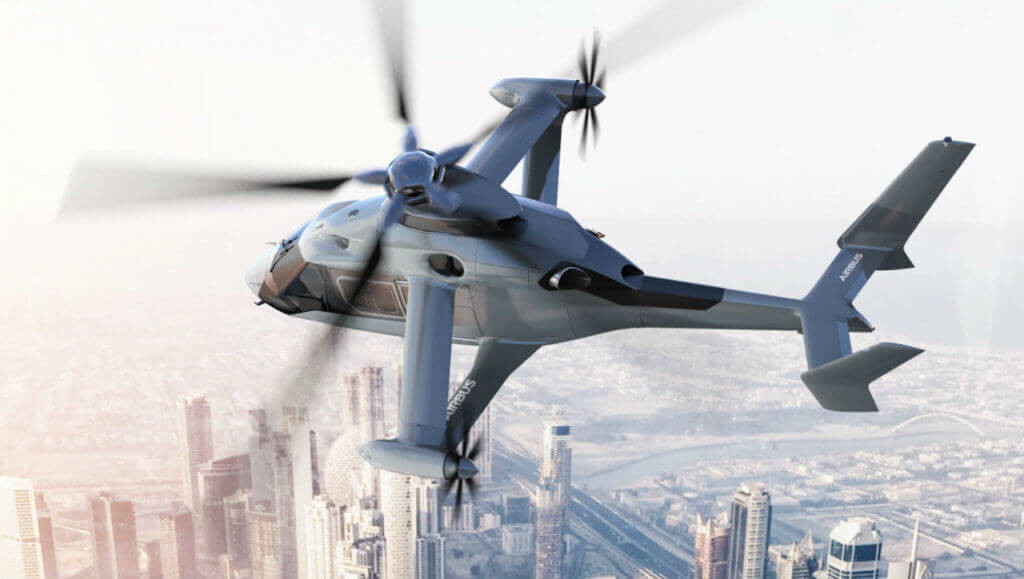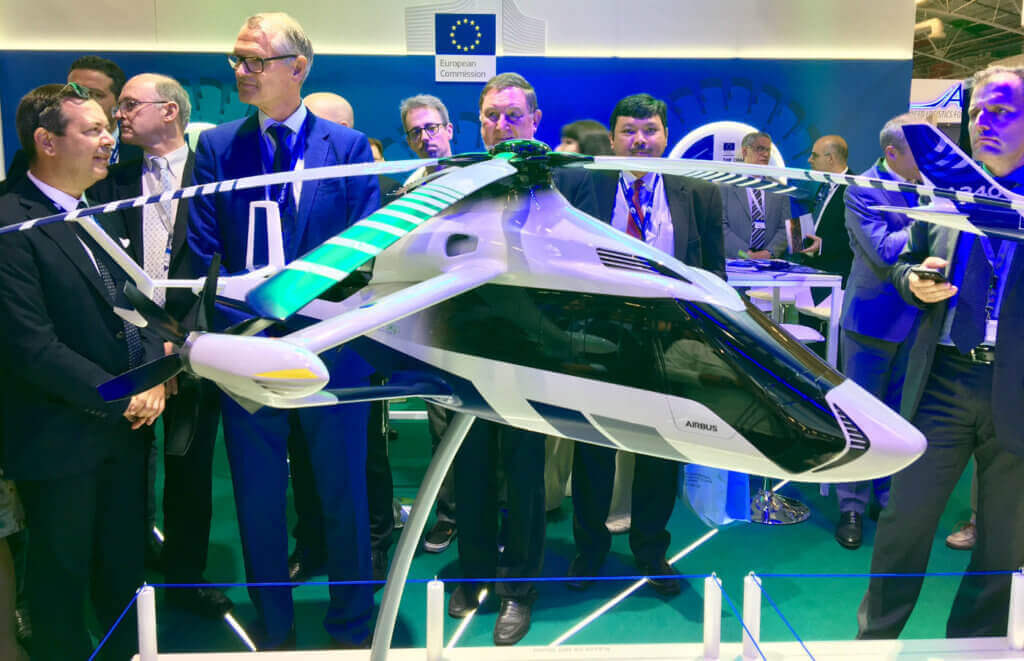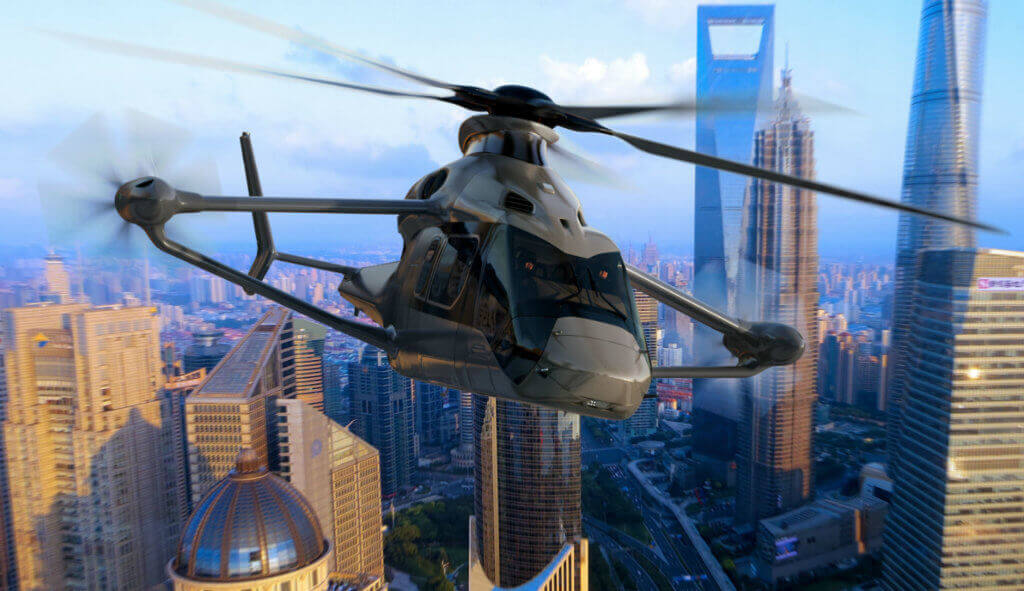Airbus Helicopters has unveiled a downscaled mockup of a new compound helicopter demonstrator as part of the Clean Sky 2 public-private research program, which is slated to fly in 2020.

Known as the Racer (an acronym for Rapid And Cost-Efficient Rotorcraft), the demonstrator is on display at the Paris Air Show. And, while it clearly takes inspiration from Airbus’s earlier X3 compound aircraft, the Racer is essentially a cleansheet design. When Airbus built the X3 in 2010, it reused a lot of existing components and subassemblies, such as a Dauphin fuselage. This time, most components are optimized for use in the Racer.
Airbus is targeting a slightly slower cruise speed than the X3’s 220 knots optimum. At 190 knots, it is estimated the Racer will need less power than a conventional, similar-weight helicopter flying at 140 knots.
This is achieved through the use of wings, which provide part of the lift, helping to alleviate the main rotor’s load. As the rotation speed is reduced, blade tip speed is no longer a problem, and the main rotor needs less power. Moreover, the mast sustains less bending strain. This is thanks to the side-mounted propellers — so the rotor no longer has to be pitched forward for the aircraft to gather speed. So, from both an aerodynamic and a mechanical standpoint, it is easier for such a design to fly at high speeds.

The X3 was flight-tested from 2010 to 2014. Lutz Bertling, then-CEO of what was then known as Eurocopter, was enthusiastic about the program, but his successor, Guillaume Faury, has had a more conservative approach about research and development spending. The X3 demonstration program was never used as a basis for a product. Nonetheless, it seems Clean Sky 2 has renewed interest for the idea.
The Racer will feature an optimized architecture, Tomasz Krysinski, head of research and innovation at Airbus Helicopters, told Vertical. The box wing brings a number of benefits. The upper wing has a masking effect over the lower wing and the downwash therefore “sees” a smaller surface. For an equivalent hover performance, the main rotor may produce less thrust.
The main landing gear can be installed in the lower wing, and wheels can thus be located further apart. This gives more stability and makes retraction and extension mechanisms simple.

The box wing is also stiffer than a conventional one, so the transmission shafts therefore deform less. In turn, they can be made lighter. Both steel and carbon-fiber shafts will be evaluated, according to Krysinski.
The Racer’s propellers, in a pusher configuration, are far from passenger doors. Moreover, downstream from the wing, the airflow is more favorable to a propeller’s aerodynamics, and cuts its power need by 10 percent, Krysinski said.
A pair of Safran Helicopter Engines RTM322 turboshafts, in service on military helicopters like the NH90, will drive the rotor and propellers. A noteworthy feature will be a small but spectacular level of hybridization; in cruise flight, it is more efficient to use one engine at high power than two at medium power, so thanks to an innovative “stop and start” electric system, one turboshaft will be shut down or idled in cruise flight. The system will be able to restart the engine very quickly, if needed.
Final assembly of the Racer is planned for 2019, with flight trials scheduled for the 2020 to 2022 period, which could be extended. The goal of the demonstration is to bring the compound concept to technology readiness level 6, meaning it will be ready for a full program launch.
Airbus Helicopters has a number of European partners, as is required in such a project. Aernnova, a Spanish specialist of composite materials, will supply the aft fuselage., while Avio, an Italian company that is part of U.S.-based GE, will collaborate on the gearboxes’ design.
The total cost of the program is €200 million ($220 million). Large companies — like Airbus Helicopters — see a maximum 40 percent of their share of the cost funded by the Clean Sky 2 program. Smaller partners receive up to 60 percent funding.










Nice design.